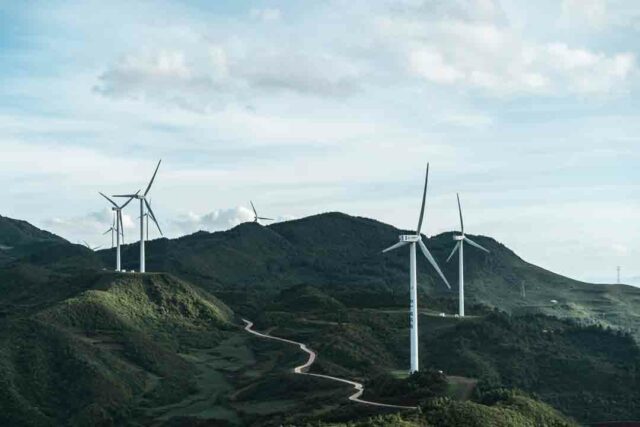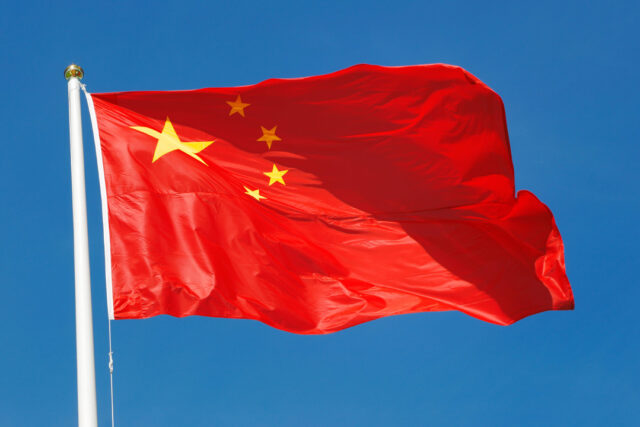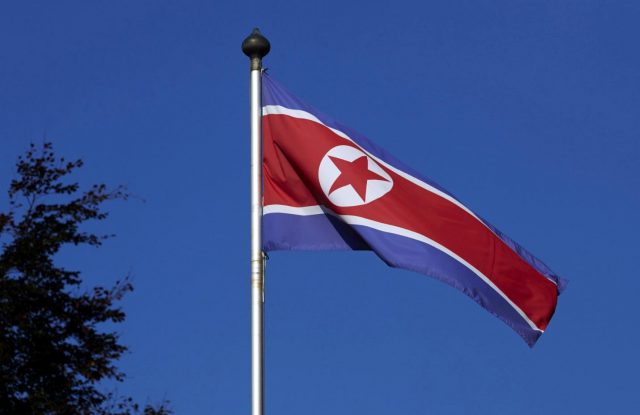GREEN BAY, Wisconsin — Thin with a boyish face and earrings in both ears, 23-year-old Isayah Turner does not look like a stereotypical Trump supporter, who tend to be middle aged or older.
Nevertheless, Mr. Turner drove two hours from his home outside Milwaukee on a recent Tuesday to see Republican presidential candidate Donald Trump at a rally in Green Bay, Wisconsin, one of a contingent of young voters there that some opinion polls suggest could be a growing and important demographic for Trump.
For Democratic incumbent Joseph R. Biden, who overwhelmingly won the youth vote in 2020, an erosion of his support among young voters could potentially dampen his hopes of a second term.
Mr. Turner, who runs a dog breeding business with his mother, voted for Mr. Trump in 2020. He supports Trump’s pro-oil drilling stance, his opposition to gun control — Mr. Turner owns several firearms — and his pledge to crack down on illegal immigration.
“I cannot think of one thing that Trump did that upset me while he was in office. And now with Biden in office there are countless things I disagree with,” Mr. Turner told Reuters. “A lot of my friends are on the same page as me.”
A Reuters/Ipsos poll in March showed Americans age 18-29 favoring Mr. Biden over Mr. Trump by just 3 percentage points — 29% to 26% — with the rest favoring another candidate or unsure of who if anyone would get their vote.
If Trump, 77, stays close to Mr. Biden, 81, in this demographic all the way to Election Day on Nov. 5 it would be a major gain compared to 2020, when Mr. Biden won the youth vote by 24 points.
Concerns about Mr. Biden’s age and his support of Israel in its war against Hamas in Gaza have fueled the erosion of his support among young voters at a time he is also losing Hispanic voters.
There are also signs young people are slowly warming to the Republican Party, despite Mr. Biden’s efforts to keep them on side by trying to cancel student debt, expand affordable housing and reverse curbs on abortion rights.
The share of Americans between 18-29 who identify as Republicans has ticked higher, from 24% in 2016 to 26% in 2020 and 28% so far this year, Reuters/Ipsos polling shows.
Despite a mixture of cold winds, sleet and rain, some 3,000 Trump supporters lined up outside a Green Bay convention center on April 2 to see Mr. Trump. The crowd skewed older, as usual, but there were hundreds of young people as well.
Reuters interviewed 20 people under the age of 30 to understand their support. The most common reason given for backing the former president was inflation and the perception the economy was not working for them, underscoring how the rise in prices for daily staples is more salient for some than high stock prices and low unemployment during the Biden years.
“I make decent money and I can’t afford a home on the salary I make now,” said Steve Wendt, 26, a security guard at a nearby hospital. “It’s time to get a man back into office that is going to lower our prices.”
At the same time, a majority said they agreed with Trump’s reticence about aiding Ukraine in its war with Russia, an isolationist stance at odds with Biden’s foreign policy agenda.
Collin Crego, 19, a history student, said funds spent overseas would be better used to tackle domestic issues like drug addiction.
“I don’t really like what we are doing with Ukraine,” Mr. Crego said. “When I hear him (Trump) talk, he’s very patriotic, very ‘America First’ and I like that.”
Of the 20 people Reuters interviewed, 15 cited inflation or other economic concerns for why they support Trump, while a dozen said his plan to restrict immigration was important to them.
All said they were unbothered by the four criminal cases Trump is facing, or the idea that his efforts to overturn the 2020 election made him a threat to democracy. One was Black, the other 19 were white. Eight will be casting their first presidential ballot this year.
Caitlyn Huenink, 20, said being a young Trump supporter can be hard because left-leaning young people tend to frown on her views. She said, however, that she has recently seen changes among her peer group at University of Wisconsin–Green Bay.
“They’re more open to the way I think and more of my friends are becoming Republican,” she said.
‘MAKING ENDS MEET’
To be sure, a group of young people willing to brave inclement weather to see Mr. Trump are not a representative sample of the broader electorate, and polling this early in the cycle could prove off. Younger people vote less frequently than older Americans, making them especially difficult to predict.
Moreover, some opinion surveys indicate that Biden is holding on to his significant advantage with the youth.
An Economist/YouGov poll conducted last week showed 51% of voters under 30 picking Mr. Biden, versus 32% for Mr. Trump, while the Harvard Youth Poll, released Thursday, put Mr. Biden’s lead over Trump among likely young voters at 19 points.
“Donald Trump is not winning the youth vote,” John Della Volpe, director in charge of the Harvard poll, told Reuters.
The Biden campaign is not sitting still. In March it launched a $30-million ad buy across digital platforms and announced a project to reach students and recruit volunteers in high schools and on college campuses. It is working to inform younger people of the administration’s investments in green energy and efforts to protect abortion access.
“That’s why the campaign is working tirelessly to earn the votes of young voters — investing earlier than ever and leveraging every opportunity to connect with young voters,” said Eve Levenson, the campaign’s youth engagement director.
The latest Marist College poll was nevertheless a red flag for Mr. Biden. Conducted in March, it showed Mr. Trump 2 points ahead among Millennial and Gen-Z voters, with 61% of 18-29 year olds saying they disapprove of the job Biden is doing as president.
The Trump campaign sees young people as a demographic for potential gains in 2024, a campaign adviser told reporters last month. He said the economy and overseas conflicts — Trump often claims Russia’s attack on Ukraine would not have happened on his watch — were key topics to message about to this group.
“Like many Americans, young people can’t afford rent, gas, or groceries, and they’re struggling to buy a home because real wages have plummeted,” said Anna Kelly, a spokesperson for the Republican National Committee.
Ms. Kelly also pointed to a finding in the Harvard poll — that only 9% percent of young Americans think the U.S. is on the right track — as proof that some were turning to Mr. Trump.
Among young voters, Mr. Trump appears to be doing better with males. The Harvard poll put Mr. Biden’s lead among young men at just six percentage points, down 20 points from 4 years ago. Mr. Trump’s deficit with women was 33 points, largely unchanged.
Della Volpe says that gender gap likely reflects several factors. One is that young men feel they are losing the right to speak frankly due to progressive views they believe are imposed on them about political correctness and toxic masculinity. These concerns are reinforced by Mr. Trump and podcasters like Jordan Peterson, popular with young men.
Mr. Trump has attended several Ultimate Fighting Championship events this election cycle, which are favored by young men. He also showed up at a Philadelphia sneaker convention where he put his golden “Never Surrender High-Tops” up for sale.
It was the kind of campaign stop meant to resonate with voters like Turner, a sneaker aficionado who was wearing a $400 pair of Nikes when Reuters spent an afternoon with him at his dog business two days after the rally.
Mr. Turner talked about the challenges of operating a business. He said gasoline was a major expense as he frequently drives to breeders hours away.
Mr. Turner said it was his Trump-loving mother, a former backer of President Barack Obama, who got him interested in politics.
Like other young people Reuters met at the rally, Mr. Turner said it was Mr. Trump’s way of speaking without care for the political consequences that made him attractive. He said some of Mr. Trump’s dehumanizing rhetoric bothers him, but he believes -— as Mr. Trump has claimed — that Mr. Biden is the true threat to America.
“Some of it is extreme,” Mr. Turner said of Mr. Trump’s speech. “But at the same time if it means the country is going to do phenomenally better… and it’s still going to be a free country I can take my feelings getting hurt in exchange for that.” — Reuters












